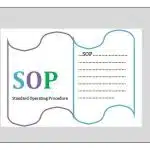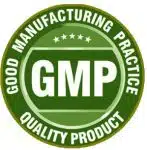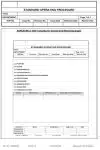Learn how to handle audits in pharmaceutical industry. Handling audits, whether internal or external (by regulatory authorities or clients), requires careful planning, preparation, and a systematic approach.

Table of Contents
Here’s a step-by-step guide to successfully handle audits:
1. Audits Preparation
Pre-Audit Assessment: Conduct internal audits or mock inspections to evaluate your compliance with regulations and identify potential gaps.
Gather Documentation: Ensure all documentation (SOPs, records, batch records, training logs, maintenance logs, etc.) is organized, up-to-date, and easily accessible.
Assign Responsibilities: Designate a dedicated team to manage the audit process, including an audit leader, personnel for answering specific questions, and a scribe to take notes.
Audit Training: Train staff on how to respond to auditors, including how to communicate effectively, provide clear answers, and avoid volunteering unnecessary information.
2. During the Audit
Be Courteous and Professional: Welcome the auditor and provide any necessary introductions. Make sure they feel comfortable, and have a designated area for the audit to minimize disruptions.
Presentation and Documentation: Provide the requested documents promptly. Have copies available if the auditor needs them for review. Always present the most recent and relevant version of the documents.
Clear Communication: Answer questions accurately and concisely. If a question is unclear, ask the auditor to clarify before responding. Avoid volunteering more information than is asked for, which could lead to additional scrutiny.
Transparency: If a mistake or deficiency is identified during the audit, be honest and acknowledge it. Transparency helps build trust with the auditor.
Demonstrate Good Practices: Allow the auditor to observe operations if required, ensuring that all staff follow good manufacturing practices (GMP) during the audit.
Maintain Records: Have someone document all interactions, questions asked by the auditor, and responses provided. This record will be useful for future reference and addressing audit findings.
3. Managing Site Tours
Preparation of the Area: Ensure the facility is clean, organized, and operating according to GMP guidelines. Address any known issues before the audit.
Guide the Auditor: Have a knowledgeable representative lead the auditor through the facility. Ensure personnel encountered during the tour know how to interact professionally with the auditor.
Demonstrate Compliance: During the tour, highlight your company’s commitment to quality, hygiene, and GMP compliance. Show key quality control checkpoints and explain your processes briefly but effectively.
4. Handling Audit Findings
Be Receptive: If the auditor raises concerns or findings, listen carefully and take notes. Don’t argue with the auditor, but calmly explain your process if there is a misunderstanding.
Seek Clarifications: If an audit finding is unclear or seems vague, ask the auditor to provide more detail or examples to ensure you fully understand the issue.
Acknowledge Deficiencies: If valid findings are identified, acknowledge them and assure the auditor that you will address the issues through corrective actions.
5. Post-Audit Actions
Audit Report Review: Once the audit is completed, review the auditor’s report in detail. Compare the notes taken during the audit with the official findings to ensure everything aligns.
CAPA Plan: For any deficiencies or observations in the audit report, develop a Corrective and Preventive Action (CAPA) plan to address the issues. This includes root cause analysis, corrective actions, and preventive measures to avoid recurrence.
Respond to the Audit Report: If the auditor provides an official report, respond within the requested time frame, outlining your CAPA plan. Ensure your response is clear, detailed, and demonstrates a proactive approach to addressing the findings.
Implement Corrective Actions: Promptly implement the corrective actions identified in your CAPA plan and monitor their effectiveness.
Follow-Up Audit (if required): Be prepared for a follow-up audit if it’s needed to verify the implementation of corrective actions. Maintain all records to demonstrate that the issues have been resolved.
Related Topic: SOP for Internal Audit
6. Continuous Improvement
Review and Learn: After the audit, conduct a team debriefing to review what went well and what could be improved for future audits.
Audit Frequency: Schedule regular internal audits to maintain ongoing readiness. Continuous self-assessment helps ensure GMP compliance and minimizes surprises during external audits.
Training Updates: Incorporate any lessons learned into future employee training programs to strengthen compliance and improve readiness for future audits.
Best Practices for Audit Success
Stay Audit-Ready: Treat every day as if an audit could happen. Consistent GMP compliance will minimize the stress of last-minute preparation.
Open Communication with Auditors: Maintain a professional relationship with auditors. If they feel you’re cooperative and proactive, it can work in your favor.
Anticipate Common Questions: Based on past audits, prepare for common areas of focus, such as batch records, equipment calibration, cleaning procedures, and raw material control.
Encourage Team Involvement: Make audit readiness a company-wide initiative. Everyone should understand the importance of compliance, and all levels of staff should be prepared.
By following these steps, you’ll be well-positioned to handle audits smoothly, ensure ongoing compliance, and foster a culture of quality within your organization.

Abdus Sobhan Salim is professional experienced pharmacist in pharmaceuticals, author and founder of pharmabossbd.com, the first Bangladeshi pharmaceutical blogger since 2019.



